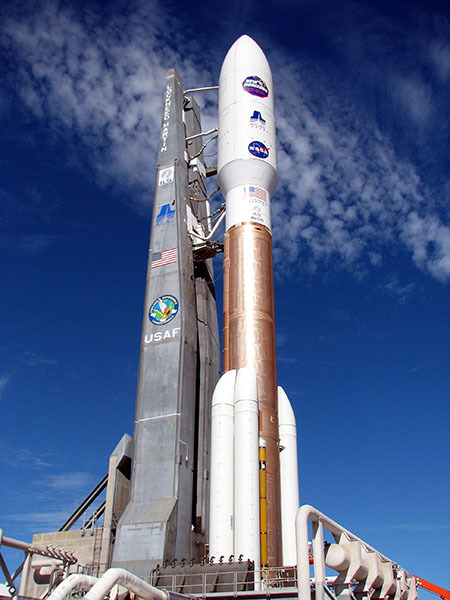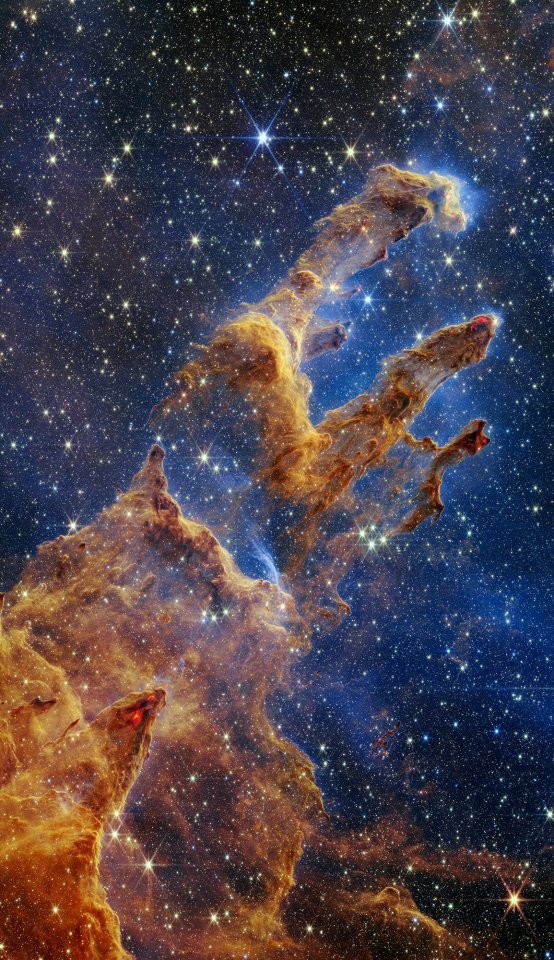M31 Adromeda Galaxy (Visible Light) By NASA Goddard Photo And Video

M31 Adromeda Galaxy (Visible Light) by NASA Goddard Photo and Video
More Posts from Ad-astra-affecte-spe and Others







New Horizons – Scientist of the Day
The New Horizons spacecraft, bound for Pluto, blasted off its launch pad aboard an Atlas V rocket on Jan. 19, 2006.
read more...
Two spiral galaxies, NGC 6040 and NGC 6039, are merging together at the right side of this Hubble image. NGC 6039 is seen face-on and is circular in shape. NGC 6040 seems to lie in front of the first one. In the lower-left corner, cut off by the frame, the elliptical galaxy NGC 6041 — a central member of the galaxy cluster that Arp 122 resides in — appears as light radiating from a point. The color image was made from separate exposures taken in the visible and infrared regions


Ring of Fire October 2023 l Bray Falls

A universe in motion seen from the International Space Station during a night pass over Earth.
(@ wonderofscience on Twitter)
Timelapse created from images courtesy of the Earth Science and Remote Sensing Unit, NASA Johnson Space Center(ISS061-E-110520-111341 eol.jsc.nasa.gov).

The Milky Way and its red nebulae hanging over the Isaac Newton Telescope at La Palma // Jakob Sahner


The photos that NASAHubble & NASAWebb took of The Pillars of Creation inspired me deeply. I had to draw what I saw in the formation: A hand reaching into the universe. What an accomplishment for humankind and what a symbol for exploration and knowledge. Credit 2nd image: NASA

2023 October 23
Moon Io from Spacecraft Juno Image Credit: NASA, JPL-Caltech, SwRI, MSSS; Processing & Copyright: Ted Stryk & Fernando García Navarro
Explanation: There goes another one! Volcanoes on Jupiter’s moon Io keep erupting. To investigate, NASA’s robotic Juno spacecraft has begun a series of visits to this very strange moon. Io is about the size of Earth’s moon, but because of gravitational flexing by Jupiter and other moons, Io’s interior gets heated and its surface has become covered with volcanoes. The featured image is from last week’s flyby, passing within 12,000 kilometers above the dangerously active world. The surface of Io is covered with sulfur and frozen sulfur dioxide, making it appear yellow, orange and brown. As hoped, Juno flew by just as a volcano was erupting – with its faint plume visible near the top of the featured image. Studying Io’s volcanoes and plumes helps humanity better understand how Jupiter’s complex system of moons, rings, and auroras interact. Juno is scheduled to make two flybys of Io during the coming months that are almost 10 times closer: one in December and another in February 2024.
∞ Source: apod.nasa.gov/apod/ap231023.html

Eruption of Tvashtar volcano on Jupiter's moon Io (March 1, 2007)
-
 intergalacticassino reblogged this · 11 months ago
intergalacticassino reblogged this · 11 months ago -
 intergalacticassino liked this · 1 year ago
intergalacticassino liked this · 1 year ago -
 eniracbutdark liked this · 1 year ago
eniracbutdark liked this · 1 year ago -
 ad-astra-affecte-spe reblogged this · 2 years ago
ad-astra-affecte-spe reblogged this · 2 years ago -
 unearthlygal reblogged this · 2 years ago
unearthlygal reblogged this · 2 years ago -
 entryplug reblogged this · 2 years ago
entryplug reblogged this · 2 years ago -
 quieropupusas24 reblogged this · 2 years ago
quieropupusas24 reblogged this · 2 years ago -
 steveaustinonlyone reblogged this · 2 years ago
steveaustinonlyone reblogged this · 2 years ago -
 sylvanthorn liked this · 2 years ago
sylvanthorn liked this · 2 years ago -
 rh35211 reblogged this · 2 years ago
rh35211 reblogged this · 2 years ago -
 vitelio65 liked this · 2 years ago
vitelio65 liked this · 2 years ago -
 poppakilo liked this · 2 years ago
poppakilo liked this · 2 years ago -
 hashbrown-lover liked this · 2 years ago
hashbrown-lover liked this · 2 years ago -
 crown-and-diamonds reblogged this · 2 years ago
crown-and-diamonds reblogged this · 2 years ago -
 crown-and-diamonds liked this · 2 years ago
crown-and-diamonds liked this · 2 years ago -
 sphere-in-the-corner reblogged this · 2 years ago
sphere-in-the-corner reblogged this · 2 years ago -
 averagetransman reblogged this · 2 years ago
averagetransman reblogged this · 2 years ago -
 adversary1 reblogged this · 2 years ago
adversary1 reblogged this · 2 years ago -
 absolutesciencefiction reblogged this · 2 years ago
absolutesciencefiction reblogged this · 2 years ago -
 sheliesshattered reblogged this · 2 years ago
sheliesshattered reblogged this · 2 years ago -
 blakhole liked this · 2 years ago
blakhole liked this · 2 years ago -
 sundaysmonday reblogged this · 2 years ago
sundaysmonday reblogged this · 2 years ago -
 violet-aux-lethe liked this · 2 years ago
violet-aux-lethe liked this · 2 years ago -
 androidsghost liked this · 2 years ago
androidsghost liked this · 2 years ago -
 xploseof reblogged this · 2 years ago
xploseof reblogged this · 2 years ago -
 diluted18 liked this · 2 years ago
diluted18 liked this · 2 years ago -
 kikuarc reblogged this · 2 years ago
kikuarc reblogged this · 2 years ago -
 the-yearning-astronaut reblogged this · 2 years ago
the-yearning-astronaut reblogged this · 2 years ago -
 jackofwords liked this · 2 years ago
jackofwords liked this · 2 years ago -
 daily-meme reblogged this · 2 years ago
daily-meme reblogged this · 2 years ago -
 daily-meme liked this · 2 years ago
daily-meme liked this · 2 years ago -
 daeshikoba reblogged this · 2 years ago
daeshikoba reblogged this · 2 years ago -
 33-9x reblogged this · 2 years ago
33-9x reblogged this · 2 years ago -
 rainbowghostcat liked this · 2 years ago
rainbowghostcat liked this · 2 years ago -
 melancaotica reblogged this · 2 years ago
melancaotica reblogged this · 2 years ago -
 sheetmaskpapii reblogged this · 2 years ago
sheetmaskpapii reblogged this · 2 years ago -
 sheetmaskpapii liked this · 2 years ago
sheetmaskpapii liked this · 2 years ago -
 eniracbutbackwards liked this · 2 years ago
eniracbutbackwards liked this · 2 years ago -
 pritxc liked this · 2 years ago
pritxc liked this · 2 years ago -
 thetesseract427 reblogged this · 2 years ago
thetesseract427 reblogged this · 2 years ago -
 itati reblogged this · 2 years ago
itati reblogged this · 2 years ago -
 itati liked this · 2 years ago
itati liked this · 2 years ago -
 33-9x liked this · 2 years ago
33-9x liked this · 2 years ago

★•Astronomy, Physics, and Aerospace•★ Original and Reblogged Content curated by a NASA Solar System Ambassador
204 posts



